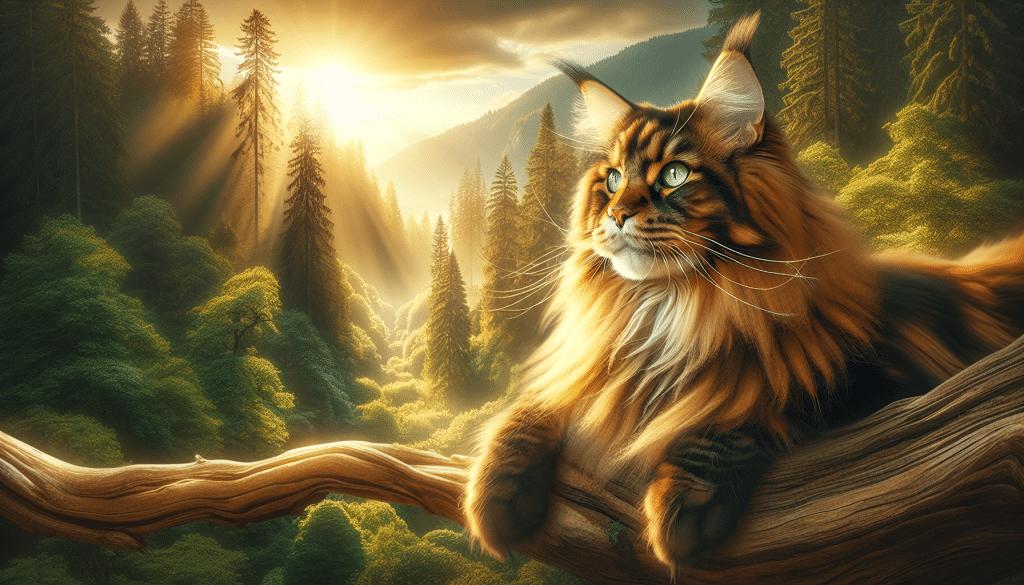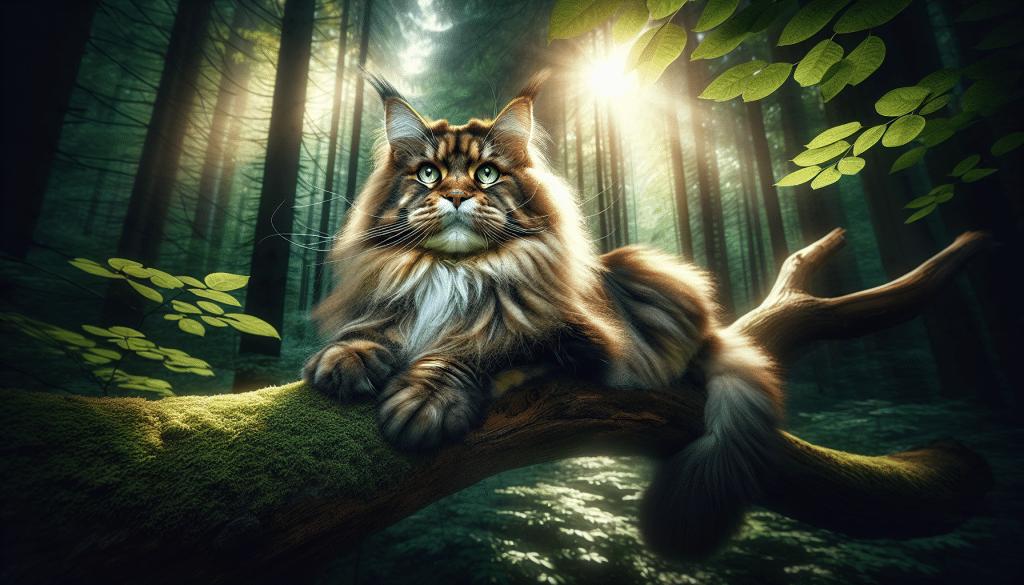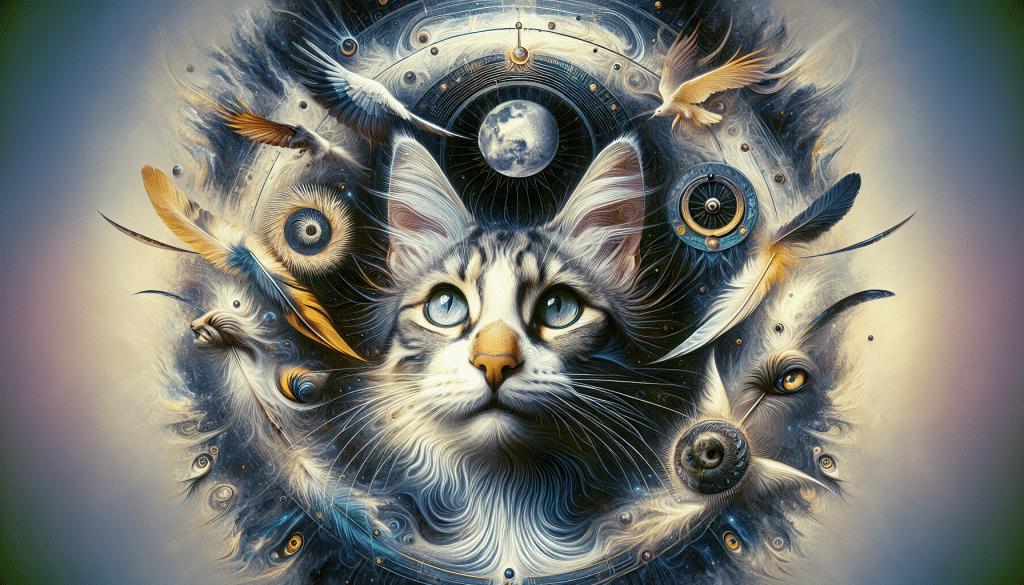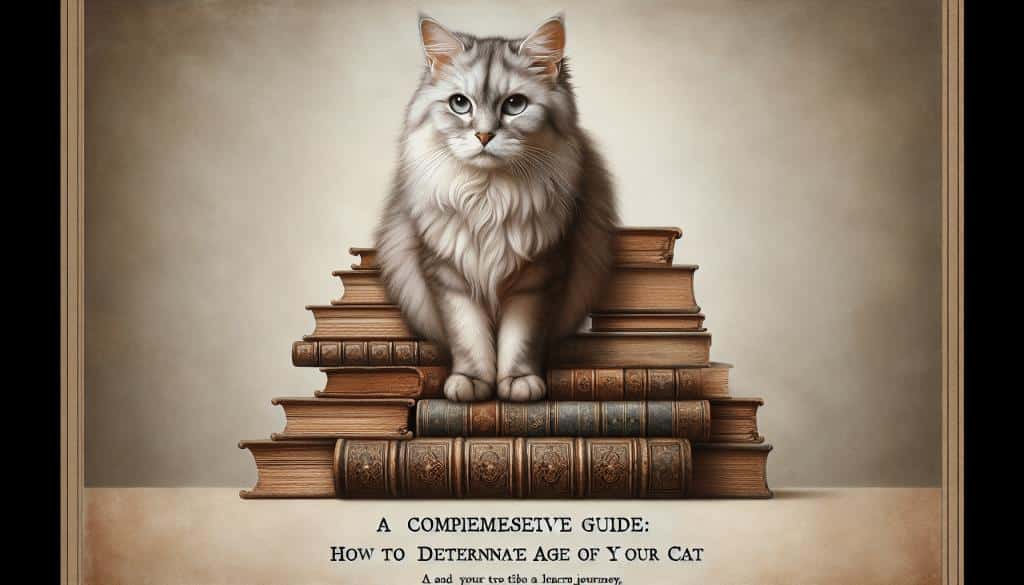Imagine having a feline companion who thrives in the great outdoors, effortlessly blending with nature’s beauty and embracing the freedom of the open world. In this article, embark on a journey to discover the top outdoor cat breeds – these fearless felines, with their inherent wanderlust and independent spirit, are truly a sight to behold. Whether you’re an adventure enthusiast seeking a four-legged partner to accompany you on hikes or simply looking to provide your furball with an enriching outdoor experience, this exploration of outdoor cat breeds will leave you craving for more.
Characteristics of Ideal Outdoor Cat Breeds
When it comes to outdoor cat breeds, certain characteristics stand out, making them better suited for life outside. These characteristics range from physical attributes that aid in their adaptability to temperaments that thrive in the great outdoors. Additionally, their fur and coat types play a crucial role in weather resistance, while considerations for health and lifespan must also be taken into account. Let’s explore the unique qualities that make these outdoor cat breeds truly exceptional.

Physical Attributes for Outdoor Adaptability
Outdoor cats need to possess certain physical attributes that enable them to thrive in their natural environment. One such breed that excels in this aspect is the Maine Coon. Known as the gentle giants of the feline world, Maine Coons have large, muscular bodies and sturdy builds that help them navigate various terrains effortlessly. Their strong legs and high level of agility make them skilled climbers and excellent hunters. Combined with their tufted ears and dense, water-resistant fur, Maine Coons are well-equipped to face the challenges of outdoor life.
Another breed that showcases ideal physical attributes for outdoor living is the Norwegian Forest Cat. Originating from the Scandinavian forests, these cats have adapted to endure harsh weather conditions. Their robust bodies, strong muscles, and sturdy bone structure make them resilient and agile. With tufted ears, long, bushy tails, and water-resistant double coats, Norwegian Forest Cats are perfectly suited to handle the elements while exploring the great outdoors.
Temperaments Suited for Outdoor Life
In addition to physical attributes, the temperament of a cat plays a significant role in determining its suitability for the outdoor lifestyle. Bengal cats, for instance, have an adventurous spirit and a high energy level that makes them ideal for outdoor explorations. These cats love to climb, run, and play, making them a great choice for individuals seeking an active companion. Bengal cats possess a confident and inquisitive nature, which helps them adapt to new environments and safely navigate outdoor spaces.
Abyssinians also possess temperaments that are well-suited for an outdoor lifestyle. Known for their high energy levels and their love for exploration, these cats are always on the move. Abyssinians possess a keen sense of curiosity and intelligence, making them excellent hunters. With their playful yet independent nature, Abyssinians thrive in outdoor settings where they can engage both their bodies and minds.
Fur and Coat Types for Weather Resistance
Outdoor cats need the right kind of fur and coat to protect them from the elements. Maine Coons, with their long, thick, and water-resistant fur, provide excellent insulation against cold weather. Their dense undercoat and longer guard hairs help keep them warm and protected during chilly outdoor adventures. Norwegian Forest Cats also feature a double coat to stay well-insulated. Their long, flowing fur not only helps them regulate their body temperature but also offers an added layer of protection against rain and snow.
The Bengal’s coat, while distinctly beautiful, is also functional for outdoor living. It features a unique leopard-like pattern called rosettes, which provide excellent camouflage in various outdoor settings. This pattern helps them blend into their surroundings while stalking prey or exploring their territory. The Bengal’s short coat is low-maintenance, making it well-suited for outdoor living.
Health Considerations and Lifespan
While enjoying the outdoor life, it’s important to consider the health and lifespan of your feline companion. Maine Coons are generally healthy cats, but they may be prone to certain genetic conditions such as hypertrophic cardiomyopathy and hip dysplasia. However, with regular veterinary check-ups and a balanced diet, Maine Coons can live a long and fulfilling life, typically spanning 12 to 15 years.
Norwegian Forest Cats, being a natural and hardy breed, are generally healthy cats. However, they may be predisposed to certain inherited conditions such as hypertrophic cardiomyopathy and renal polycystic disease. By maintaining a healthy diet and providing regular veterinary care, Norwegian Forest Cats can enjoy a lifespan of 12 to 16 years.
Maine Coon
Size and Physical Characteristics
As one of the largest domesticated cat breeds, the Maine Coon boasts an impressive size. Adult males can weigh anywhere between 13 to 18 pounds, while females typically range from 8 to 12 pounds. Apart from their size, Maine Coons have sturdy builds and muscular bodies. Their tails are long and bushy, and their ears are tufted, giving them a distinctive appearance. Their eyes come in various colors, ranging from green, gold, and copper to orange.
Personality Traits and Behavior
Maine Coons have earned a reputation for being gentle, friendly, and sociable cats. They love the attention of their human companions and often form strong bonds with their families. Maine Coons are known for their affectionate nature and their desire to be a part of every aspect of their owners’ lives. They often follow their owners around the house and prefer to be included in household activities.
These cats are also highly intelligent and curious, always exploring their surroundings and seeking mental stimulation. Maine Coons have a playful side and enjoy interactive toys and puzzles. Despite their large size, they tend to be quite graceful and agile, excelling at feats such as climbing, jumping, and even opening doors with their paws.
Maintenance and Grooming
Maintaining a Maine Coon’s luxurious coat requires regular grooming. Their long, shaggy fur is prone to matting, so a grooming routine is essential to keep their coat in good condition. Weekly brushing helps remove loose hair, prevent matting, and reduce shedding. Maine Coons also benefit from routine nail trims, teeth brushing, and ear cleaning to ensure overall health and cleanliness. Given their friendly and cooperative nature, grooming sessions can become a bonding experience for both cat and owner.
Health and Lifespan
Maine Coons are generally healthy cats but are predisposed to certain genetic conditions. Hypertrophic cardiomyopathy, a heart disease, and hip dysplasia, a condition affecting the hip joints, are known to occur in this breed. Regular veterinary check-ups and screenings are crucial to monitor and manage these conditions. With proper care, a balanced diet, and a loving environment, Maine Coons typically enjoy a lifespan of 12 to 15 years.
Norwegian Forest Cat
Breed Origin and History
The Norwegian Forest Cat, also known as the “Skogkatt” in its native Norway, can trace its origins back to the Scandinavian forests. These cats have a rich history intertwined with Norwegian folklore and mythology. While their precise origins remain uncertain, Norwegian Forest Cats are believed to have adapted to the harsh northern climate over thousands of years.
Physical Adaptations for Outdoor Living
Surviving in the rugged Norwegian wilderness requires physical adaptations, and the Norwegian Forest Cat excels in this aspect. These cats have a sturdy bone structure, muscular bodies, and strong legs, all of which aid in their physical strength and agility. Their large, tufted ears protect them from cold winds and snow, while their long, bushy tails provide balance and serve as insulation in colder climates.
Temperament and Social Behavior
Norwegian Forest Cats are known for their friendly and sociable nature. They form strong bonds with their human companions and enjoy being part of a family. While they may be reserved with strangers initially, they often warm up quickly and are quick to accept newcomers into their circle. These cats are highly intelligent and love mental stimulation, so interactive toys and puzzles can provide hours of entertainment.
Grooming Needs and Health Issues
Despite their long, thick fur, Norwegian Forest Cats have a surprisingly low-maintenance grooming regimen compared to other long-haired cat breeds. Their dense double coats shed seasonally, requiring more attention during shedding periods. Regular brushing helps remove loose hair and prevent matting. However, they do experience an increase in shedding during spring and fall, known as “molting.” Additionally, they need routine nail trims, dental care, and ear cleaning to maintain optimal health.
Healthwise, Norwegian Forest Cats are generally robust. However, they may be predisposed to certain inherited conditions, such as hypertrophic cardiomyopathy and renal polycystic disease. Annual veterinary check-ups, vaccinations, and preventative care are essential to keep these majestic cats healthy. With proper care and nutrition, Norwegian Forest Cats can live to be 12 to 16 years old.
Bengal

Distinctive Coat and Appearance
One of the most striking features of Bengal cats is their unique coat. This breed showcases a leopard-like pattern with beautifully rosetted spots or marbled markings. The coat colors can vary, ranging from brown, snow, silver, and charcoal, with each combination adding to the Bengal’s distinct appearance. Their coats are short, dense, and sleek, making them low-maintenance and perfect for an outdoor lifestyle.
Activity Levels and Playfulness
Bengals are renowned for their high energy levels and playful nature. They possess an innate curiosity and enjoy exploring their surroundings. When given access to the outdoors, Bengal cats become even more stimulated, engaging in climbing, running, and jumping to their heart’s content. They are also quite adept at puzzle toys and interactive games, which help keep their minds sharp and entertained.
Interaction with Environment
Outdoor environments provide an ideal setting for Bengals to exhibit their natural hunting instincts. These cats love to climb trees, pounce on prey, and engage in playful stalks. The outdoor space allows them to experience a more enriched environment, stimulating their senses and providing the mental and physical engagement they thrive upon. As natural jumpers, they enjoy the thrill of leaping over fences and exploring their territory.
Health and Diet Considerations
Bengal cats are generally healthy but can be prone to specific conditions such as hypertrophic cardiomyopathy and certain types of cancer, such as feline leukemia. Routine veterinary care and check-ups, including vaccination schedules, are crucial in keeping these cats healthy. Additionally, maintaining a balanced diet is essential to their overall well-being. Providing a high-quality, nutritious diet formulated for an active lifestyle can help support their energy levels and promote longevity.
Abyssinian
History and Background of the Breed
Among the oldest known cat breeds, the Abyssinian has a captivating history. Originating from ancient Egypt, Abyssinians were considered sacred companions to the pharaohs. Portrayed in ancient Egyptian art, these cats were revered for their mystical and exotic appearance. While their precise origins remain shrouded in mystery, the Abyssinian’s elegant and athletic build speaks volumes of their heritage.
Physical Endurance and Agility
Abyssinians possess remarkable physical endurance and agility, making them natural outdoor explorers. They have slender, muscular bodies that allow for graceful movements and quick reflexes. Their long, lean legs enable them to jump to impressive heights and navigate various terrains with ease. Abyssinians are built for speed and are excellent runners, showcasing their natural athleticism in the great outdoors.
Social and Hunting Behaviors
Abyssinians thrive on social interactions and enjoy being an integral part of their human family. They are known for their affectionate and loyal nature, forming strong bonds with their owners. These cats also possess a keen hunting instinct and are excellent hunters. When given the opportunity to explore the outdoors, Abyssinians can utilize their natural skills to stalk prey, climb trees, and indulge in playful “ambushes.”
Grooming and Wellness Care
Grooming an Abyssinian is relatively simple, as their short, dense coats require minimal maintenance. A weekly brushing session helps remove loose hair and keeps their coat looking sleek and shiny. These cats have a naturally high energy level, so providing environmental enrichment and mental stimulation is essential to their overall well-being. Regular veterinary check-ups, vaccinations, and dental care are necessary to ensure their continued health and longevity.
American Bobtail
Breed Characteristics and Appearance
The American Bobtail is a distinctive breed known for its unique tail. Unlike other cats, the Bobtail’s tail is shorter, often resembling the tail of a wild bobcat. It ranges from one-third to one-half the length of a regular cat’s tail, with various degrees of curliness or kinking. The tail is an essential characteristic of this breed, contributing to its overall appearance and charm. They come in a variety of colors and patterns, with each combination adding to their individuality.
Adaptability and Outdoor Survival Skills
American Bobtails possess exceptional adaptability, making them well-suited for outdoor living. Their origins lie in the wild, where their short tails provided an advantage in their natural environment. These cats are adept at survival, possessing keen instincts, and the necessary skills to navigate and thrive in the outdoors. American Bobtails are known for their ability to climb, jump, and explore new environments, making them resilient and versatile outdoor cats.
Personality Traits
The American Bobtail is renowned for its friendly and sociable disposition. These cats form strong attachments to their human family and are known to be affectionate and loyal companions. They are intelligent cats with a playful nature, always seeking opportunities for engagement and mental stimulation. American Bobtails are often described as gentle and patient, making them a great choice for families with children or other pets.
Grooming Requirements and Health
American Bobtails have a low-maintenance grooming routine, thanks to their short to medium-length coats. Weekly brushing helps remove loose hair and reduces shedding, contributing to a healthy coat. Additionally, routine dental care, nail trims, and regular veterinary check-ups are essential to maintaining their overall health. American Bobtails are generally healthy cats, but like all breeds, they may be prone to certain genetic conditions. Regular veterinary care and preventive measures play a crucial role in their well-being.
Siberian

Origins and Breed History
The Siberian cat is a breed with a rich history that traces back centuries in Russia. Hailing from the inhospitable climates of Siberia, these cats have adapted to thrive in extreme cold weather conditions. They were well-respected and cherished for their hunting skills, which helped provide food for the Russian nobility during harsh winters.
Cold Weather Adaptations
Living in one of the coldest regions of the world, Siberian cats have developed unique adaptations to withstand freezing temperatures. They have triple-layered coats consisting of an insulating undercoat, a water-repellent middle layer, and a long, coarse guard hair outer layer. This dense coat provides excellent protection against the cold, keeping the cat warm even in sub-zero temperatures. Additionally, Siberians have a round, robust body, with thick fur around their necks and ears, acting as natural earmuffs and scarves.
Behavioral Traits
Siberians are known for their friendly and outgoing nature, making them highly adaptable to various environments, including the outdoors. They possess an adventurous spirit and love to explore their surroundings. Siberians are also intelligent cats, quickly learning how to solve puzzles and manipulate objects. Their playful nature and love for interactive toys make them a delightful companion for both indoor and outdoor activities.
Health and Maintenance
Siberians are generally healthy cats, owing to the harsh conditions they were bred to endure. However, like all breeds, they can be prone to certain genetic conditions such as hypertrophic cardiomyopathy and polycystic kidney disease. Regular veterinary check-ups and preventative care are crucial to ensure their well-being. Siberians have a moderate shedding level, so regular brushing helps remove loose hair and reduces the amount of fur they ingest. This grooming routine keeps their coats healthy and minimizes the risk of hairballs.
Manx
Unique Physical Traits
The Manx breed is characterized by its distinctive lack of tail. Originating from the Isle of Man, these cats possess a genetic mutation that affects the development of their tail bones. While some Manx cats may have a small stub, others are entirely tailless. Despite their unique appearance, Manx cats have well-proportioned bodies with a muscular build. They come in various coat lengths, patterns, and colors, offering a wide range of choices for feline enthusiasts.
Temperament and Independence
Manx cats are known for their independent nature and self-reliance. While they form strong bonds with their human families, they also appreciate their alone time. However, Manx cats are not solitary creatures and generally enjoy the company of their owners. They are intelligent and adaptable, making them suitable for both indoor and outdoor lifestyles. Their cautious and observant nature helps them navigate their environment with ease.
Exercise and Activity Preferences
Just like any other cat, Manx cats require regular exercise to maintain their physical and mental well-being. Outdoor access allows them to fulfill their natural instincts, such as stalking, chasing, and climbing. Their strong hind legs enable them to jump to impressive heights, while their agility and speed make them engaging playmates. Manx cats benefit from interactive toys, scratching posts, and vertical spaces, which allow them to mimic the natural hunting and climbing activities they would experience in the wild.
Health Concerns and Grooming
Manx cats can be prone to certain health issues due to their breed’s genetic mutation. One such condition is Manx Syndrome, which can affect the spinal cord, pelvis, and gastrointestinal system. Regular veterinary check-ups and preventative care are essential to monitor and manage any potential health issues. Grooming a Manx cat is relatively straightforward, especially for those with short coats. Weekly brushing helps remove loose hair and maintain a healthy and shiny coat. Additionally, routine dental care, nail trims, and ear cleaning contribute to their overall health and well-being.
Turkish Angora
Historical Significance
The Turkish Angora is a breed with a storied history dating back several centuries. Originating in Turkey, these majestic cats were adored and revered by the Turkish people. Regarded as a national treasure, Turkish Angoras were kept in palaces and even served as diplomatic gifts. Their grace, beauty, and enchanting white coats capture attention and evoke a sense of elegance and mystique.
Physical Features for Outdoor Adaptation
Turkish Angoras possess several physical features that facilitate their adaptation to outdoor living. Their thick, semi-long fur protects them from the elements, acting as insulation against both heat and cold. Their ear tufts and toe tufts, unique to the breed, help shield sensitive areas from dust, snow, and debris. Turkish Angoras also have a muscular and athletic build, allowing them to navigate various terrains with grace and agility.
Social Interactions and Temperament
Turkish Angoras are known for their sociable and friendly nature. They form strong bonds with their human families and enjoy being part of daily activities. These cats are highly intelligent, quick to learn, and possess a playful and mischievous nature. Turkish Angoras are also adaptable, making them well-suited for both indoor and outdoor environments. Their easy-going temperament and their love for human interaction make them a delightful companion for outdoor adventures.
Grooming Needs and Health Conditions
Despite their beautiful coat, Turkish Angoras have relatively low grooming requirements. Regular brushing helps remove loose hair and prevents matting. It is important to note that the coat of a Turkish Angora is prone to tangling and matting, so attention must be paid to keeping it well-groomed. Routine veterinary check-ups, vaccinations, and preventative care are essential to ensure their overall health and well-being. With proper care, Turkish Angoras can enjoy a long and healthy lifespan.
Outdoor Living Considerations for Cat Owners
When it comes to allowing your cat outdoor access, there are several considerations that every responsible cat owner should keep in mind. Creating a safe and secure outdoor environment is paramount to ensure your feline companion’s well-being. Additionally, training your cat for outdoor access, providing adequate shelter and comfort, and scheduling regular health check-ups and vaccinations are essential for their overall health and happiness.
Safety Measures and Precautions
Ensuring the safety of your outdoor cat requires taking several precautions. Begin by establishing a secure outdoor space, be it an enclosed yard or a catio. This allows your cat to enjoy the benefits of the outdoors while minimizing the risks associated with unrestricted outdoor access. It is essential to check for potential escape routes and seal any gaps that may allow your cat to wander off unsupervised.
Training for Outdoor Access
Before allowing your cat outside, it is crucial to provide appropriate training. Begin by gradually introducing your cat to the outdoors in a controlled environment, such as a secure harness or a supervised outdoor enclosure. This method helps your cat become familiar with the outdoor surroundings and understand the boundaries set by you. Once your cat has become comfortable, you can gradually increase their outdoor access under supervision.
Shelter and Comfort in the Outdoor Space
Creating a comfortable and safe outdoor environment for your cat is essential. Provide a sheltered area where your cat can seek refuge from inclement weather conditions or take a break from the sun. This can be a cozy cat house or a covered outdoor space that provides shade and protection. Offering comfortable bedding, fresh water, and food in the outdoor space ensures that your cat has everything it needs for a pleasant outdoor experience.
Regular Health Check-ups and Vaccinations
Maintaining your cat’s health should always be a priority, regardless of whether they have outdoor access. Regular veterinary check-ups, vaccinations, and preventative care are necessary to keep your cat healthy and protected from potential diseases or parasites. Discuss with your veterinarian the specific vaccination and preventive care requirements based on your cat’s lifestyle and the region you live in.
In conclusion, when considering outdoor cat breeds, it is important to take into account their physical attributes, temperaments, fur and coat types, as well as health considerations and lifespan. The Maine Coon, Norwegian Forest Cat, Bengal, Abyssinian, American Bobtail, Siberian, Manx, and Turkish Angora are all breeds that possess unique qualities that make them well-suited for an outdoor lifestyle. By providing the appropriate environment, care, and attention, cat owners can ensure their feline companions lead happy, healthy, and fulfilling outdoor lives.



